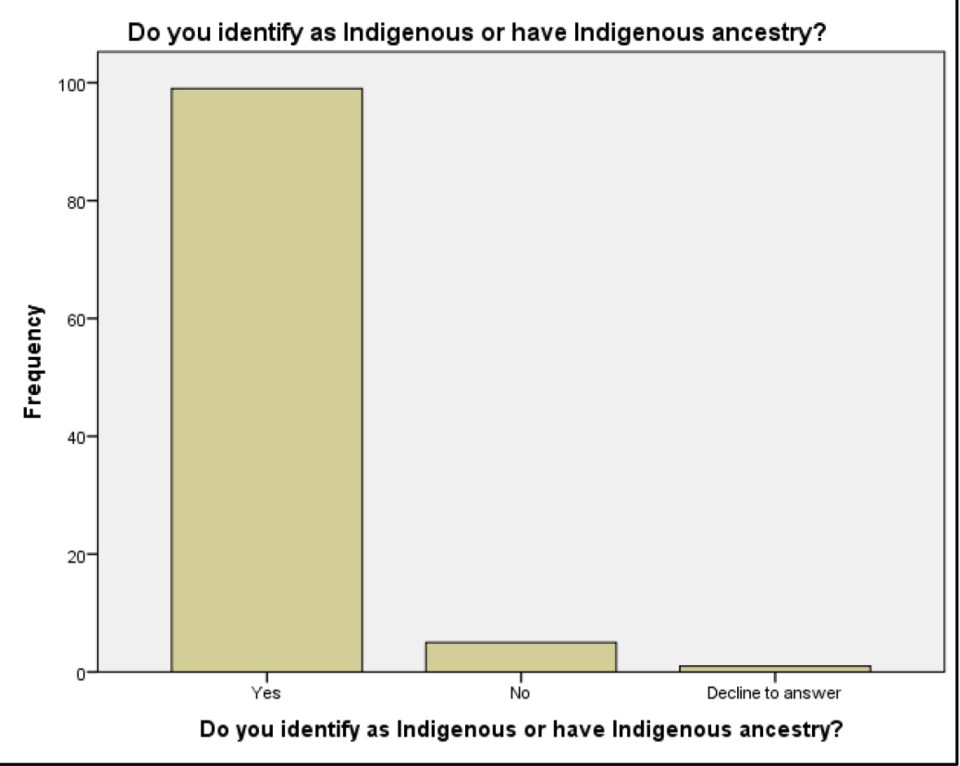Indigenous people are vastly overrepresented among Thompson’s homeless population, making up more than 90 per cent of those without a permanent residence, more than double the estimated percentage of all Thompson residents who are Indigenous.
That was among the findings in the report on the 2018 point-in-time count that took place March 13-14, and counted a total of 130 homeless people, including 112 adults and 18 children. Forty seven of the adults and four of the children were considered unsheltered – i.e. staying in a place not meant to be a home such as a tent, shack or public place – with 65 of the adults and 14 of the children classified as sheltered, meaning they were staying somewhere such as a shelter, the Thompson Crisis Centre or a transitional housing facility. About 70 of the adult survey respondents qualified as chronically homeless, which is defined as having been homeless for six months or more in the past year.
Sixty per cent of the adult participants identified as male and another 35 per cent as female, and the average age of Thomson’s homeless population was 42, though they ranged in age from 20 to 76, and the largest age group were those aged 40 to 49 years old, who accounted for about 27 per cent of the homeless people interviewed by volunteer surveyors.
Thirty-five respondents said they first became homeless before the age of 20 and 57 said they had lived in Thompson for years. A sizeable majority – 82 of the adult respondents – had either been in residential school themselves or had a family member who had, while 61 had either been in the foster care system or had a family member who was. Close to half – 54 – needed services for substance abuse while nearly a quarter – 27 – required services for chronic or acute medical conditions.
Sheltered respondents were identified and surveyed on the night of March 13, when all of the homeless shelter’s 24 beds were in use, along with all 16 beds at 31 McGill place, and 11 of 12 beds at Men Are Part of The Solution’s transitional Phoenix House. There were also 12 people staying at the crisis centre, 22 at the YWCA, 16 at the Addictions Foundation of Manitoba. This is greater than the number of people interviewed in the survey because some declined and others were screened out as not fitting the study’s definitions of homelessness.
Surveys of unsheltered homeless people were conducted on the street between 8 a.m. and 1 p.m. on March 14. Thirty-two people who were approached by volunteers to complete the survey declined or said they had already been surveyed while another 57 were screened out after it was determined that they weren’t homeless.
Survey authors Colin Bonnycastle and Lee Anne Deegan, both faculty members with the University of Manitoba’s northern social work program, who were assisted with the report by social work student Barbara Belcher and with the survey itself by a couple dozen social work students and other volunteers and partners, said in the introduction the number of homeless Indigenous people in Thompson is a legacy of Canadian history and the development of Northern Manitoba.
“The causes of homelessness amongst Indigenous people must be viewed within the context of the historical injustices brought on through processes of colonization. The North has a long colonial history that has affected Indigenous peoples and communities. The legacy of residential schools, the 60’s scoop where Indigenous children were removed from their families and communities, as well as relocations due to hydro development and mining are all aspects of colonization in northern Manitoba that have affected Indigenous communities to this day. It is well established that poverty, chronic health problems, public intoxication and other interpersonal, social and individual problems amongst Indigenous people are frequently the expressions of intergenerational traumas resulting from historical processes and prejudices which are pervasive in Canadian society.”
Other factors affecting homelessness in Thompson included the relatively low vacancy rate of 1.6 per cent and the relatively high cost of rental housing, combined with the fact that some people who come to the area do not have the rental histories or credit scores that many landlords require from tenants. The authors also acknowledged that point-in-time counts may miss some people who fit their definitions and that the number of homeless people might be different if they survey were conducted in the summer rather than late in the winter.




